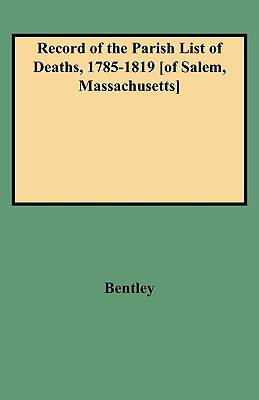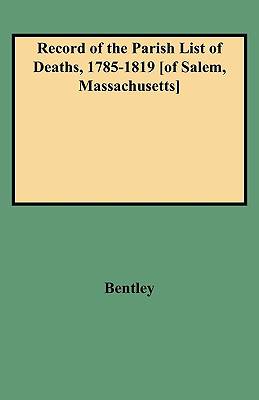
- Afhalen na 1 uur in een winkel met voorraad
- Gratis thuislevering in België vanaf € 30
- Ruim aanbod met 7 miljoen producten
- Afhalen na 1 uur in een winkel met voorraad
- Gratis thuislevering in België vanaf € 30
- Ruim aanbod met 7 miljoen producten
Zoeken
Record of the Parish List of Deaths, 1785-1819 [Of Salem, Massachusetts]
William Bentley
Paperback | Engels
€ 38,45
+ 76 punten
Omschrijving
Salem, Massachusetts, famous for its witchcraft trials of the late 17th century, is situated about 30 miles northeast of Boston. The work at hand, compiled by William Bentley, is a transcription of the death entries found in the parish records of the East Church of Salem, of which Mr. Bentley was the pastor. The book was edited for publication by Ira J. Patch and was originally published in 1882 as part of the Historical Collections of the Essex Institute. The abstracts themselves, over 1,200 in all, are arranged in chronological order, and they are among the most complete death notices we have seen. Typically, the notice's include the decedent's name and his/her age and the cause of death; his/her place of birth; the names of parents and/or surviving family members; and something about the decedent's life or character. In all, these handy notices refer to nearly 2,500 early inhabitants of Salem, each of whom may be found in the complete name index at the back of the volume.
Specificaties
Betrokkenen
- Auteur(s):
- Uitgeverij:
Inhoud
- Aantal bladzijden:
- 182
- Taal:
- Engels
Eigenschappen
- Productcode (EAN):
- 9780806351711
- Verschijningsdatum:
- 1/06/2009
- Uitvoering:
- Paperback
- Formaat:
- Trade paperback (VS)
- Afmetingen:
- 140 mm x 216 mm
- Gewicht:
- 217 g

Alleen bij Standaard Boekhandel
+ 76 punten op je klantenkaart van Standaard Boekhandel
Beoordelingen
We publiceren alleen reviews die voldoen aan de voorwaarden voor reviews. Bekijk onze voorwaarden voor reviews.








